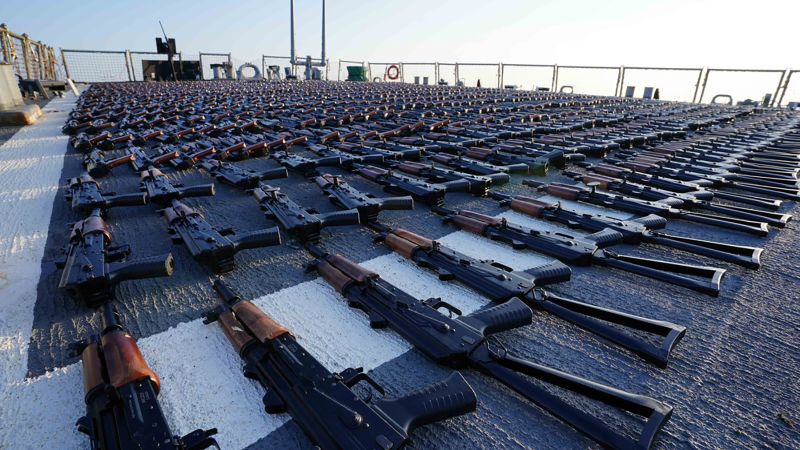The US recently transferred a significant amount of seized Iranian military equipment, including machine guns, sniper rifles, rocket launchers, and rounds of ammunition, to Ukraine to aid in their battle against Russia. Due to shortages of weapons and munitions, Ukraine has been reliant on external support to bolster its forces. The transferred materiel is enough to equip one Ukrainian brigade with small-arms rifles. The equipment was originally seized from stateless vessels and ownership was obtained through a legal process. This is not the first time the US has transferred seized Iranian military equipment to Ukraine, with previous transfers including over a million rounds of ammunition.
The US Navy has been actively seizing Iranian weapons and ammunition, meant for the Iran-backed Houthi rebels in Yemen, from vessels used for smuggling. These seizures have included thousands of assault rifles and over one million rounds of ammunition. The weapons are stored in CENTCOM facilities across the Middle East and the Biden administration has been working to legally transfer them to Ukraine. These efforts have been ongoing for the past year, with the goal of providing much-needed support to Ukraine in their conflict with Russia. The transfers are part of broader efforts to counter Iran’s support for proxy forces and destabilizing activities in the region.
The seized Iranian military equipment being transferred to Ukraine includes a variety of weapons and ammunition, with the recent transfer equipping a brigade of around 4,000 personnel with small-arms rifles. The US has faced restrictions on sending equipment from its own stockpiles to Ukraine, due to the need for additional funding approval from Congress. The transfer of seized equipment from Iran provides a crucial lifeline for Ukrainian forces in their battle against Russia. This exchange of materiel highlights the complex dynamics of international conflicts and the importance of strategic support for allies in need.
The transfers of seized Iranian military equipment to Ukraine are part of a broader strategy to support Ukraine in its conflict with Russia and to counter Iran’s activities in the region. The seizures of Iranian weapons and ammunition by the US Navy, with the assistance of regional partner forces, have been instrumental in disrupting Iran’s support for proxy forces in Yemen and elsewhere. By transferring this equipment to Ukraine, the US is not only supporting a key ally but also undermining Iran’s ability to destabilize the region through its support for militant groups.
The legal process for transferring seized Iranian military equipment to Ukraine has involved the US military and partners seizing weapons from transiting stateless vessels and obtaining ownership through civil forfeiture proceedings. These efforts, spanning several months, have culminated in the recent transfer of significant amounts of weapons and munitions to Ukraine. The Biden administration’s commitment to supporting Ukraine through this process reflects the US’s broader commitment to countering Russian aggression and supporting allies in regions of strategic importance. The transfers represent a key component of US foreign policy in the Middle East and Eastern Europe, aimed at bolstering regional security and countering destabilizing activities by adversarial states.
Overall, the recent transfer of seized Iranian military equipment to Ukraine represents a critical step in supporting Ukrainian forces in their conflict with Russia. The US’s efforts to legally transfer these weapons and munitions highlight the importance of strategic partnerships and international cooperation in addressing regional conflicts and countering the activities of hostile states. By providing crucial support to Ukraine and disrupting Iran’s support for proxy groups, the US is advancing its broader foreign policy goals in the Middle East and Eastern Europe. The transfer of seized equipment underscores the complex and dynamic nature of international conflicts and the need for coordinated and strategic responses to ensure regional stability and security.


